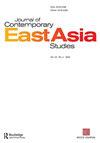When did the ROC abandon “Retaking the Mainland”? The transformation of military strategy in Taiwan
IF 1.4
Q1 AREA STUDIES
引用次数: 0
Abstract
ABSTRACT The question of when the government of the Republic of China abandoned “Retaking the Mainland” has not been clearly answered in previous studies. In this article, I attempt to address this by reexamining the transformation of Taiwan’s military strategy. I focus on the preparations for the “Retaking the Mainland” operation, which have been studied extensively, and the efforts to increase defensive capabilities as part of the “Taiwan Defense” operation, which has lesser scholarship. With respect to this period of transformation of Taiwan’s military strategy, a now broadly accepted interpretation was laid out in the 2006 National Defense Report. However, a different perspective was outlined in a 2013 book jointly compiled by Taiwan’s Ministry of National Defense and Academia Historia. The result is that, with respect to the historical shift in military strategy, the official view of the Ministry of National Defense has become somewhat ambiguous. In this article, I advance an alternative view on this period by highlighting two points at which new policies were adopted. There was a move from a strategy of “Offensive Posture” that had been in place since 1949 to a strategy of “Unity of the Offensive and Defensive,” in the Spring of 1969. Subsequently, after the establishment of the “Guidelines for National Unification” in 1991, there was another shift, to a strategy of “Defensive Posture.” As I suggest, the ROC government abandoned the concept of using military force to “Retake the Mainland” in 1991, when it moved to a strategy of “Defensive Posture.”中华民国什么时候放弃了“收复大陆”?台湾军事战略的转变
摘要对于民国政府何时放弃“收复大陆”的问题,以往的研究并未给出明确的答案。在这篇文章中,我试图通过重新审视台湾军事战略的转变来解决这个问题。我的重点是“夺回大陆”行动的准备工作,这已经得到了广泛的研究,以及作为“台湾防御”行动的一部分,为提高防御能力所做的努力,这方面的研究较少。关于台湾军事战略转型的这一时期,《2006年国防报告》提出了一种现在被广泛接受的解释。然而,2013年由台湾国防部和史学界联合编撰的一本书中概述了不同的观点。其结果是,对于军事战略的历史性转变,国防部的官方观点变得有些模糊。在这篇文章中,我通过强调新政策被采纳的两点,提出了关于这一时期的另一种观点。从1949年开始实行的“进攻态势”战略,到1969年春,转变为“攻守统一”战略。随后,在1991年“国家统一方针”确立之后,又发生了另一次转变,即转向“防御态势”战略。正如我所建议的,中华民国政府在1991年放弃了使用武力“夺回大陆”的概念,当时它转向了“防御态势”的战略。
本文章由计算机程序翻译,如有差异,请以英文原文为准。
求助全文
约1分钟内获得全文
求助全文
来源期刊

Journal of Contemporary East Asia Studies
Social Sciences-Cultural Studies
CiteScore
2.50
自引率
0.00%
发文量
10
审稿时长
6 weeks
 求助内容:
求助内容: 应助结果提醒方式:
应助结果提醒方式:


